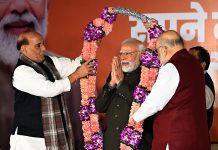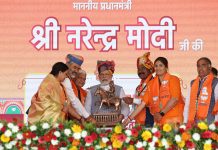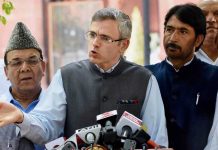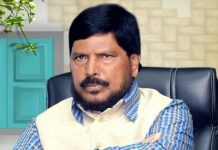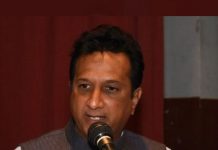 India, where nearly 38 per cent of the total population or 380 million people are very poor, is trying hard to lift its general public from the acute poverty. Chairing the recent IBSA (India, Brazil, South Africa) Foreign Ministers’ Meeting, External Affairs Minister Sushma Swaraj had urged the international community to work for complete elimination of poverty as part of the UN’s 2030-deadlined Sustained Developments Goals.
India, where nearly 38 per cent of the total population or 380 million people are very poor, is trying hard to lift its general public from the acute poverty. Chairing the recent IBSA (India, Brazil, South Africa) Foreign Ministers’ Meeting, External Affairs Minister Sushma Swaraj had urged the international community to work for complete elimination of poverty as part of the UN’s 2030-deadlined Sustained Developments Goals.
The country, as per the World Bank’s Atlas of Sustainable Development Goals, extricated 120 million people from extreme poverty between 1990 and 2013. The process, however, was relatively slow as China slashed the number of people living in extreme poverty from 756 million to 25 million during the same period. This is one version of India’s economic story.
There is another version too. Interestingly, that too is being supported by data and statistics. Most of the reports suggest that India contributes 2.99 per cent to the world’s GDP but it shares 17.5 per cent of the world population and 2.4 per cent of the world surface area. It is now the seventh-largest economy in the world and expects to cruise to the third position by 2050. During this period, the economy could move towards low-end of single-digit inflation from the high-end of double-digit, the latest data point out.
In its apparent bid to enhance the country’s economic transformation, the present government came up with a slew of measures — including demonetisation and GST — in recent past. On the face of it, most of these steps seem to be painful for the general public. India’s GDP growth has slowed down to 5.7 per cent this year. Opinions stay divided over the government action plans. One can smell differences even within the the ruling BJP over the new economic policies.
Former finance minister Yashwant Sinha recently made very interesting remarks on the initiatives of the Central government. “Demonetisation has proved to be an unmitigated disaster,” he said, adding that the GST was badly conceived and implemented. Highlighting that extra jobs have been lost under Modi-Jaitley, he hinted that there is no hope for recovery, especially with Arun Jaitley as finance minister. And the masterstroker was: “The prime minister claims that he has seen poverty from close quarters. His finance minister is working over-time to make sure that all Indians also see it from equally close quarters.”
Politics apart, the policy woes need to be addressed on an urgent basis. Population growth, which is likely to hit 1.5 billion by 2026 to make India the largest nation in the world, should be curtailed. With four out of every five of India’s poor living in rural areas, progress will need to focus on the rural poor. The policy focus must be on the welfare of poor across the country, 60 per cent of whom are still living in Bihar, Jharkhand, Odisha, Madhya Pradesh, Chattisgarh, Uttar Pradesh and Uttarakhand.
International poverty line stands at $1.25 per day. Sadly, 32.7 per cent of the total population in India lives below it. The government must act to halt the ever-increasing prices of even basic commodities. Industry wise, the unorganised sector must be pulled up a bit as owners do not bother the way their workers live and earn salaries.
Capitalising on growing connectivity between rural and urban areas, and between the agriculture, industry and services sectors, has been effective in the past two decades and holds promise for the future. The link between these must be strengthened. The government must also address job creation in more productive sectors, which has until now been tepid and has yielded few salaried jobs that offer stability and security.
Monumental policy blunders, as former prime minister Manmohan Singh had said, can also be rectified if there is will and appropriate measures are in place.


